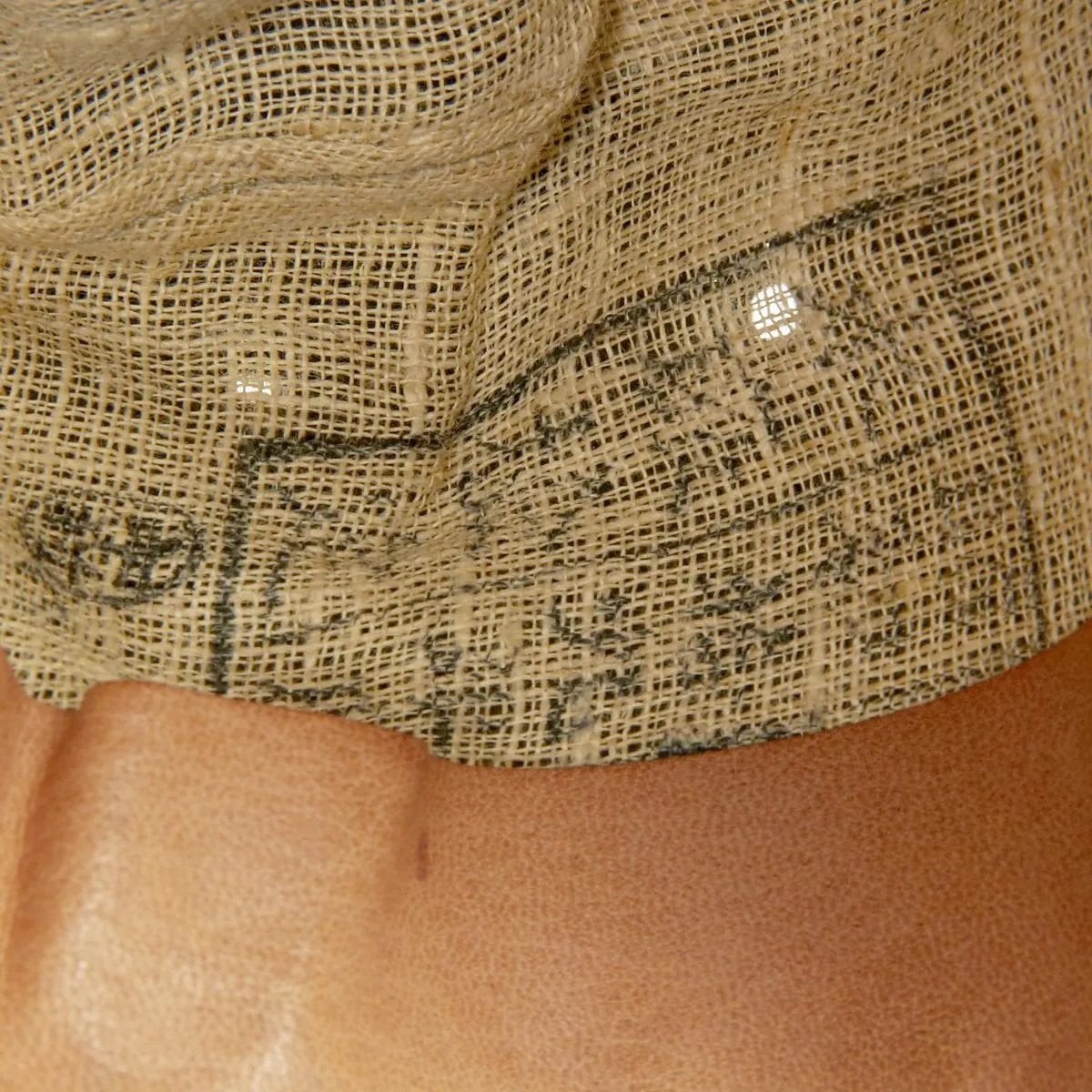Original Item: Only One Available. Wonderful condition apanese Army Imperial Guard Wool Forage Cap. Fully lined with classic cheesecloth material and plenty of wartime Japanese ink stamps with leather sweat band. Features the classic string closure to the back and a yellow felt five-pointed imperial Japanese star over wreath wool insignia badge on a green wool backing. All in all an excellent example of a very rare WW2 Japanese cap, quality items of this kind are very rarely encountered.
Size is approximately 6 3/4 and in excellent condition overall, brought back by a USMC veteran and acquired directly from his estate.
The Imperial Guard of the Imperial Japanese Army was formed in 1867. It became the foundation of the Imperial Japanese Army after the Emperor Meiji assumed all the powers of state during the Meiji Restoration. The Imperial Guard, which consisted of 12,000 men organized and trained along French Military lines, first saw action in the Satsuma Rebellion. It was organized into the 1st Guards Infantry Brigade which had the 1st and 2nd Regiments. The 3rd and 4th Regiments belonged to the 2nd Guards infantry Brigade.
By 1885 the Imperial Japanese Army consisted of seven divisions, one of which was the Imperial Guard. A division consisted of four regiments containing two battalions each. The Imperial Guard division was based in Tokyo and recruited nationally.
After the Russo-Japanese War in 1905, a second Guard Brigade was formed from indigenous Formosans. In 1920 the Guards Cavalry Regiment, Guards Field Artillery Regiment, Guards Engineer Battalion, Guards Transport Battalion, plus other Guards service units were added.
From 1937 to 1939 the Guards Engineer Battalion was expanded into a regiment as was the Guards Transport Battalion.
Pacific War
In September 1939, the division was split into the 1st and 2nd Guards Brigades.
The 1st Guards Brigade, which contained the 1st and 2nd Guards Infantry Regiments, the cavalry regiment, and half of the support units, was transferred to South China. Here it became known as the Mixed Guards Brigade. In October 1940, it joined other Japanese units occupying French Indo-China. In April 1941 the Mixed Guards Brigade returned to Tokyo but it did not rejoin the Imperial Guards Division.
The 2nd Guards Brigade, which contained 3rd and 4th Guards Regiments, also went to China. In 1940, it went to Shanghai before being posted to Hainan Island. In June 1941, the 5th Guards Infantry Regiment joined the 2nd Guards Brigade becoming the Imperial Guard Division again. It later saw action in the Battles of Malaya and Singapore with Tomoyuki Yamashita's 25th Army.
In May 1943, all designated Imperial Guard units were renamed again. The Mixed Guards Brigade in Tokyo became the 1st Guards Division (which now consisted of the 1st, 2nd, 6th Guard Regiments) and the Imperial Guard Division became the 2nd Guards Division. The 3rd Guards Division, which never left Japan, was formed in 1944. It consisted of the 8th, 9th and 10th Guards Regiments. Sources do not agree if there ever was a 7th Guard Regiment.
All military Imperial Guard Divisions were dissolved at the end of World War II.
Uniform
Until 1939, the Cavalry of the Imperial Guard wore a French style parade uniform consisting of a dark-blue tunic with red Brandenburg braiding, a red kepi and red breeches. The red kepi had a white plume with a red base. Prior to the general adoption of khaki by the Japanese Army during the Russo-Japanese War (1904-1905), an all white linen uniform had been worn in hot weather.
The Infantry of the Imperial Guard wore a dark blue uniform with white leggings for both parade and service wear until 1905. It was distinguished from that of the line infantry by a red band and piping on the peaked service cap (instead of yellow). Officers wore a dark blue tunic with 5 rows of black mohair froggings and dark blue breeches with a red stripe down each seam.
Following the adoption of a khaki service dress, the Guard Infantry wore this on all occasions, although officers retained the blue and red uniform for certain ceremonial occasions when not parading with troops.
In the field, the army's standard khaki uniform was worn by all Imperial Guard units from 1905 to 1945. Guard units were distinguished by a wreathed star in bronze worn on the headgear, in contrast to the plain five pointed star worn by other units.























